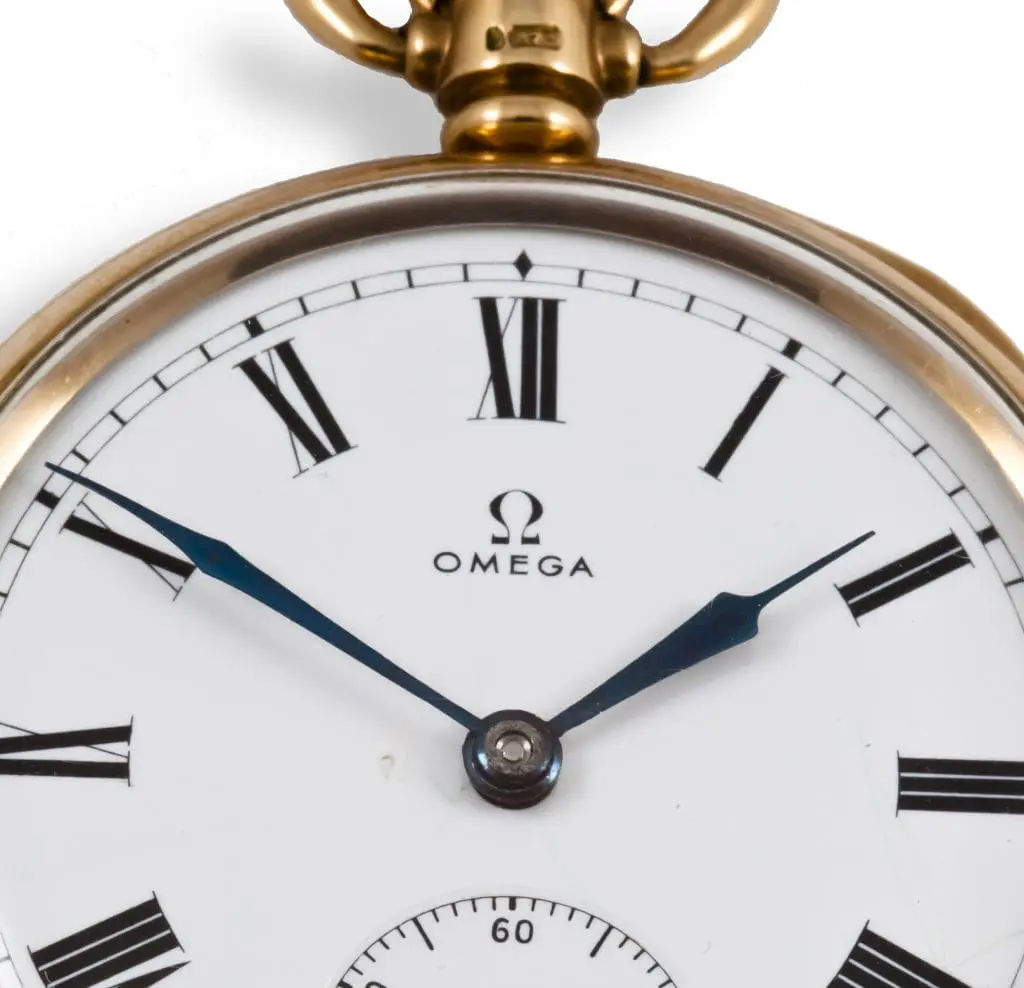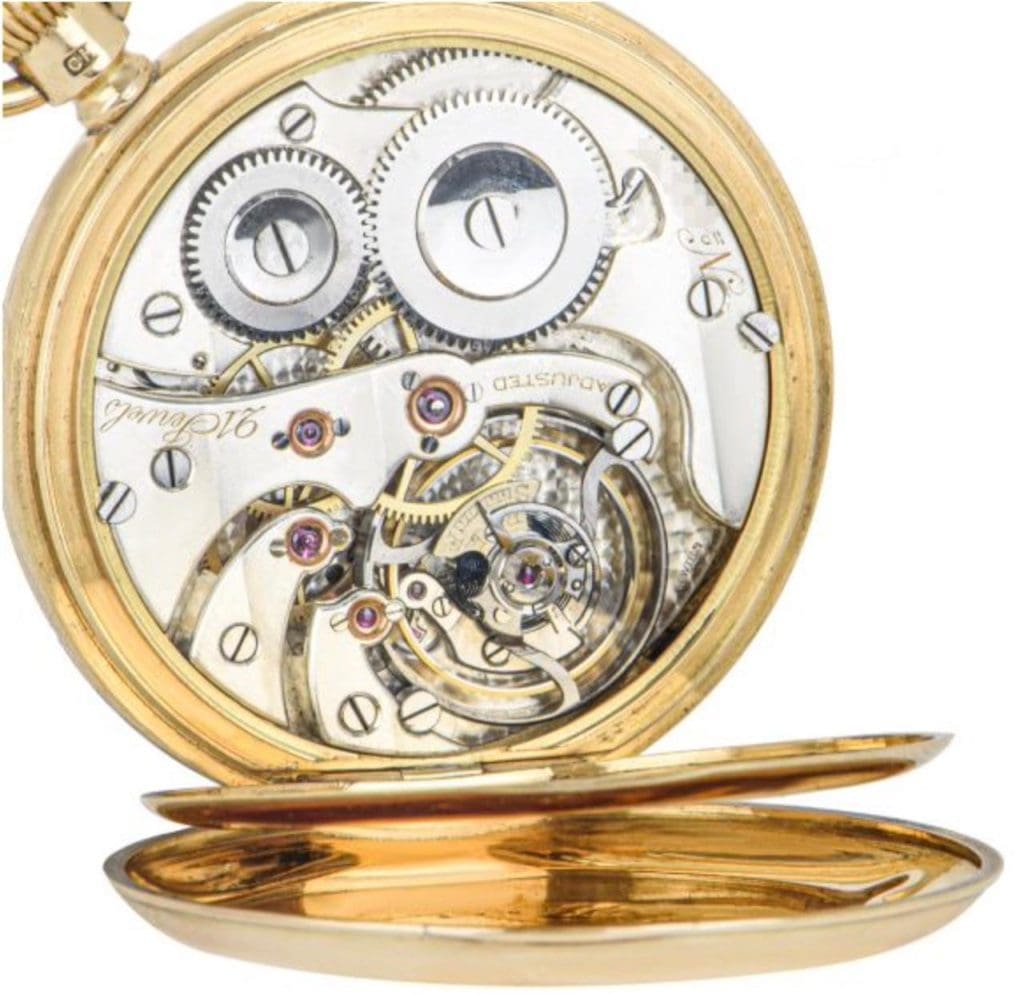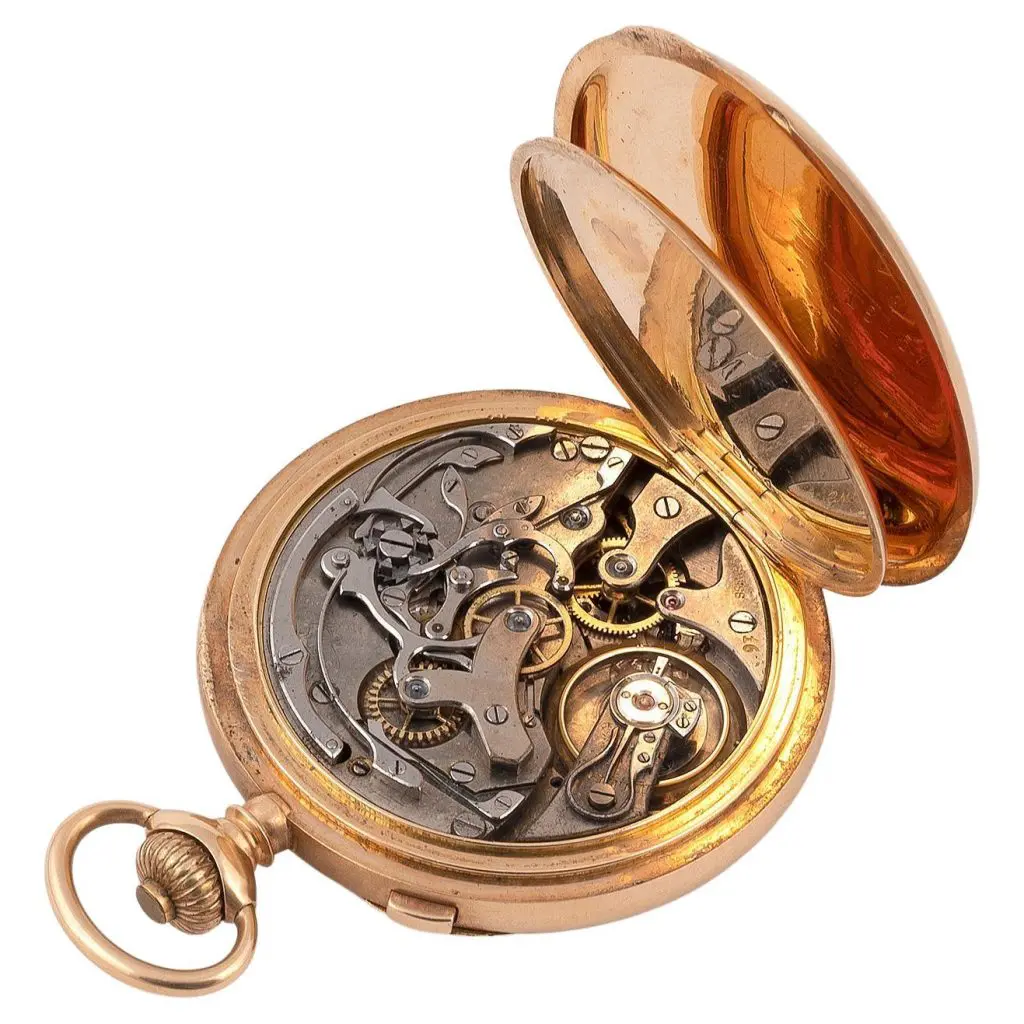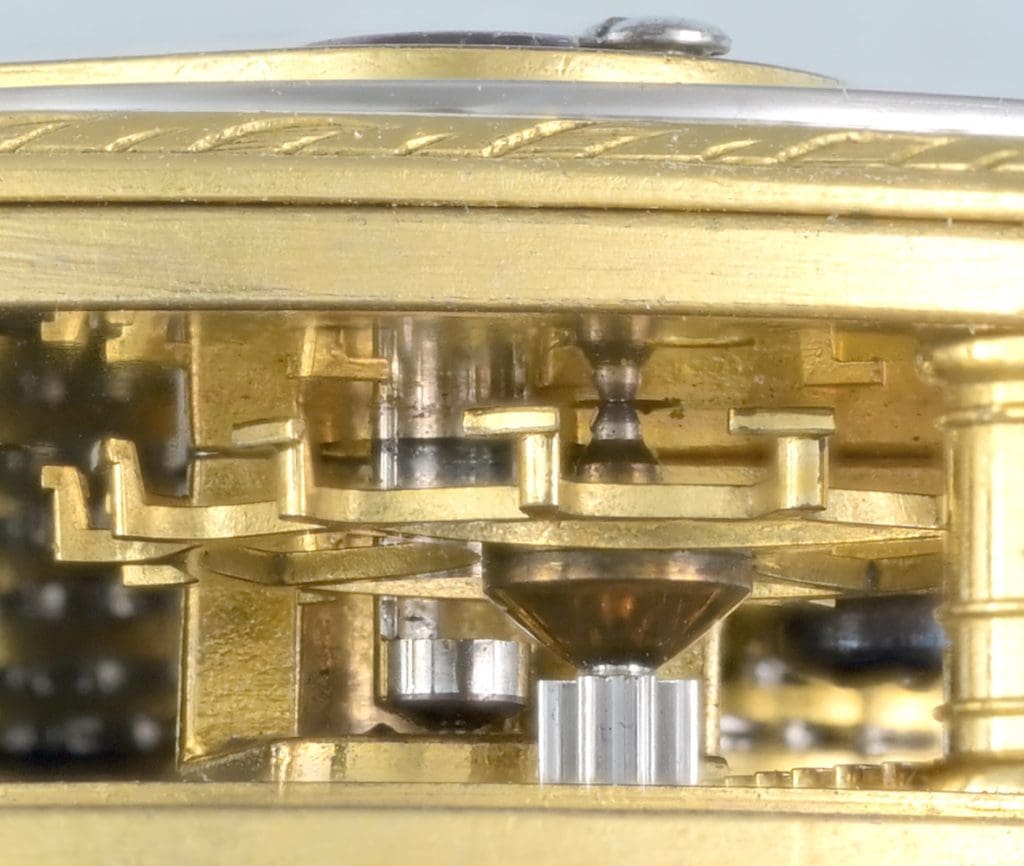If you are lucky enough to own an antique pocket watch, then it is important to take proper care of it to ensure that it lasts for generations to come. Antique pocket watches are unique, intricate timepieces that require specialized care and attention. In this blog post, we will explore maintenance tips for antique pocket watches, including how to care for your watch, cleaning and polishing techniques, the importance of regular servicing, and much more.

How to Care for Your Antique Pocket Watch
If you own an antique pocket watch, it is important to take proper care of it to ensure that it lasts for years to come. Here are some tips for caring for your antique pocket watch:
Store your antique pocket watch properly
- Store your antique pocket watch in a cool, dry place away from moisture and sunlight.
- Avoid exposing your antique pocket watch to extreme temperatures, such as leaving it in a car on a hot day.
- Handle your antique pocket watch with care to avoid damage to the delicate mechanisms inside.
Clean and polish your antique pocket watch
- Use a soft, dry cloth to gently wipe down your antique pocket watch, removing any dirt or debris.
- Avoid using harsh chemicals or solvents when cleaning your antique pocket watch, as this can damage the enamel dial or delicate mechanical parts.
- Consider having your antique pocket watch professionally cleaned and polished to restore its original shine and luster.
The importance of regular servicing
- Have your antique pocket watch serviced regularly to ensure that it is running properly and to identify and address any issues.
- A professional antique watchmaker can inspect your antique pocket watch for damage or signs of wear and tear and make any necessary repairs or replacements.
- Regular servicing can prevent costly repairs down the line and ensure that your antique pocket watch stays in top condition.
Store your antique pocket watch safely
- Store your antique pocket watch in a protective case or pouch to prevent scratches or other damage.
- Avoid storing your antique pocket watch in a location that is prone to humidity or moisture, as this can lead to rust or corrosion.
- Consider investing in a safe or security system to protect your antique pocket watch from theft or damage.
Identifying and addressing common issues
- Common issues with antique pocket watches include broken or worn parts, inaccurate timekeeping, or damage to the enamel dial.
- If you notice any issues with your antique pocket watch, it is important to have it inspected by a professional antique watchmaker.
- Addressing issues early on can prevent further damage and ensure that your antique pocket watch continues to function properly.
By following these tips, you can keep your antique pocket watch in excellent condition for years to come.

Cleaning and Polishing Your Antique Pocket Watch
To keep your antique pocket watch looking its best, it is important to clean and polish it regularly. However, it is important to take care when cleaning a delicate antique watch, as harsh chemicals or improper techniques can cause damage to the enamel dial or delicate mechanisms inside. Here are some tips for safely and effectively cleaning and polishing your antique pocket watch:
Use the Right Cleaning Materials
When cleaning your antique pocket watch, it is important to use the right tools and materials. Avoid using harsh chemicals or solvents, as these can damage the enamel dial or delicate mechanisms inside. Instead, use a soft, dry cloth to gently wipe down the outer surfaces of your watch and remove any dirt or debris. For more thorough cleaning, a professional antique watchmaker can use special tools and cleaning solutions to remove dirt and tarnish without causing damage.
Be Gentle When Cleaning
When cleaning your antique pocket watch, it is important to be gentle and avoid applying too much pressure or friction. Use a soft cloth and wipe in gentle, circular motions to remove dirt and grime. Avoid using abrasive materials that could scratch the surface or damage the delicate mechanisms inside. Additionally, be careful not to get any water or cleaning solutions inside the watch, as this could cause damage to the inner workings.
Consider Professional Polishing
If your antique pocket watch has become tarnished or dulled over time, it may benefit from professional polishing. A professional antique watchmaker can use specialized tools and techniques to restore the original shine and luster to your watch without causing damage. This can help to renew the appearance of your antique pocket watch and keep it looking its best for years to come.
Avoid Over-Polishing
While polishing can help to restore the appearance of your antique pocket watch, it is important not to overdo it. Over-polishing can remove the protective layer of the metal and damage the delicate mechanisms inside. A professional antique watchmaker has the experience and knowledge to know how much polishing is needed to restore the appearance of your watch without causing damage.

The Importance of Regular Servicing
Having your antique pocket watch serviced on a regular basis is critical to its longevity and proper function. Regular servicing can identify and address any issues before they become major problems, saving you time and money in the long run. Here are some key reasons why regular servicing is essential:
- Preventative Maintenance: Regular servicing can help prevent major issues by catching minor problems before they develop into serious concerns.
- Preserve Investment Value: With proper maintenance, your antique pocket watch can retain or even increase in value over time.
- Ensure Proper Function: Regular servicing helps ensure that your antique pocket watch is functioning as it should and keeps accurate time.
- Avoid Costly Repairs: A small investment in regular servicing can prevent the need for expensive repairs down the line.
We recommend having your antique pocket watch serviced every two to three years. This includes having it cleaned, oiled, and adjusted as needed by a professional antique watchmaker. Trusting a trained expert to service your antique pocket watch ensures that it will function properly for years to come and extends its lifespan.
Storing Your Antique Pocket Watch
Proper storage is essential for preserving the condition of your antique pocket watch.
Protective Case or Pouch
It is recommended to store your antique pocket watch in a protective case or pouch to prevent scratches or other damage. This can be a leather or velvet pouch or a hard case specifically designed for pocket watches. Make sure the case fits the size and shape of your pocket watch snugly to prevent it from moving around and potentially getting damaged.
Avoid Moisture and Humidity
Humidity and moisture can cause rust, corrosion, or damage to the delicate components of your antique pocket watch. Therefore, it is important to avoid storing your watch in a location prone to humidity or moisture, such as a damp basement or a bathroom. When storing your pocket watch, make sure the area is dry and well-ventilated.
Safe or Security System
If you have valuable or rare antique pocket watches in your collection, you should consider investing in a safe or security system to protect them from theft or damage. A safe can also help maintain a stable temperature and humidity level, which is beneficial for preserving the condition of your pocket watch.
By following these tips, you can help ensure that your antique pocket watch stays in top condition for years to come.
Identifying and Addressing Common Issues
Antique pocket watches are delicate instruments, and even with proper care, they may experience some common issues over time. It is important to be able to identify and address these issues promptly to prevent further damage and ensure that the watch continues to function properly.
Broken or Worn Parts
Broken or worn parts are a common issue with antique pocket watches. This can result from normal wear and tear over time, or from mishandling or accidental damage. If you notice your antique pocket watch is not running as smoothly as it once did or is producing odd sounds, this could indicate a broken or worn part.
Addressing this issue usually involves replacing the damaged part with a new one. It is essential to seek the assistance of a professional antique watchmaker as they can identify the broken or worn part and replace it without further damaging the watch.
Inaccurate Timekeeping
Inaccurate timekeeping is another common issue with antique pocket watches. The causes of inaccurate timekeeping vary, but some possible reasons include a dirty or damaged movement mechanism, a damaged hairspring, or a worn-out balance wheel.
If you notice that your antique pocket watch is not keeping accurate time, it is best to have it inspected by a professional antique watchmaker. They can identify the exact cause of the issue and recommend the necessary repairs.
Damage to the Enamel Dial
The enamel dial is a vital part of an antique pocket watch, and it is susceptible to damage over time. Common causes of damage include exposure to moisture, accidental scratches or impacts, and discoloration due to UV light exposure.
If you notice any damage to the enamel dial of your antique pocket watch, it is essential to have it inspected by a professional antique watchmaker. They can advise on the best way to restore the dial to its original condition and prevent further damage or discoloration.
Identifying and addressing common issues promptly is key to keeping your antique pocket watch in top condition. With proper care and regular maintenance, your antique pocket watch can continue to be a treasured timepiece for generations to come.
Maintaining the Movement Mechanism
The movement mechanism is a critical component of an antique pocket watch and requires special care to maintain its proper function. Regular servicing by a professional antique watchmaker is essential to keep the movement mechanism in top working condition. Here are some tips for maintaining the movement mechanism of your antique pocket watch:
- Never attempt to repair or adjust the movement mechanism yourself, as this can cause irreversible damage.
- Avoid exposing your antique pocket watch to extreme temperatures, humidity, or moisture, as these can damage the movement mechanism.
- If your antique pocket watch is running slow or fast, it may indicate that the movement mechanism needs servicing, so make sure to have it inspected promptly.
- During regular servicing, a professional antique watchmaker will disassemble and inspect the movement mechanism for damage, wear, and other issues.
- The watchmaker will then clean and lubricate the movement mechanism as needed to ensure that it functions properly.
By following these tips, you can help preserve the movement mechanism of your antique pocket watch and keep it working for years to come.
Preserving the Enamel Dial
The enamel dial is an important and delicate component of an antique pocket watch, and it requires special care to preserve its beauty and functionality. Here are some tips on how to preserve the enamel dial of your antique pocket watch:
Avoid Harsh Chemicals
The enamel dial is sensitive to harsh chemicals and solvents, which can cause damage over time. To prevent damage, avoid exposing your antique pocket watch to any harsh chemicals or solvents when cleaning it or removing any dirt or debris from the dial surface.
Clean with a Soft Dry Cloth
Cleaning the enamel dial with a soft, dry cloth is often enough to remove any surface dirt or debris. Be gentle when cleaning the surface of the enamel dial to avoid scratches or other damage.
Seek Professional Help When Necessary
If your antique pocket watch requires more thorough cleaning, or if you suspect that the enamel dial is damaged in some way, it is best to seek the help of a professional antique watchmaker. They can assess the condition of the dial and provide appropriate cleaning or restoration services to restore its beauty and functionality.
By following these simple tips, you can help ensure that the enamel dial of your antique pocket watch stays in top condition for years to come.
Tips for Minimizing Wear and Tear
- Avoid exposing your antique pocket watch to extreme temperatures, humidity, or moisture.
- Handle your antique pocket watch with care, avoiding dropping or banging it against hard surfaces.
- Consider having a protective cover or case fitted to your antique pocket watch to minimize wear and tear.
By taking these simple precautions, you can help ensure that your antique pocket watch stays in great condition for years to come.

Antique Pocket Watch Restoration: When to Seek Professional Help
If your antique pocket watch requires restoration, it is important to seek out a professional antique watchmaker with experience in restoration. Restoring an antique pocket watch requires specialized knowledge and skill, and attempting to do it yourself can cause irreparable damage.
A professional antique watchmaker can assess the condition of your antique pocket watch and provide guidance on the best course of action for restoration. They will have the necessary tools and expertise to dismantle the watch, clean each component, replace any damaged parts, and reassemble the watch to restore its original function and appearance.
It is important to note that restoration can be an expensive and time-consuming process, especially for rare or historic watches. However, restoring an antique pocket watch can significantly increase its value and ensure that it can be enjoyed for generations to come.
Ultimately, the decision to restore an antique pocket watch should be based on a careful consideration of its condition, rarity, historical significance, and sentimental value. If the watch holds significant sentimental or historical value, it may be worth the investment to have it professionally restored.
Conclusion
Proper maintenance and care for your antique pocket watch is crucial for preserving its value and ensuring its longevity. By following these tips on cleaning, storage, and regular servicing, you can keep your antique pocket watch in top condition. Remember to handle your watch with care, avoiding exposure to extreme temperatures and moisture, and to seek out professional help if you need restoration work done. With the right care and attention, your antique pocket watch can continue to be a cherished family heirloom for generations to come.
